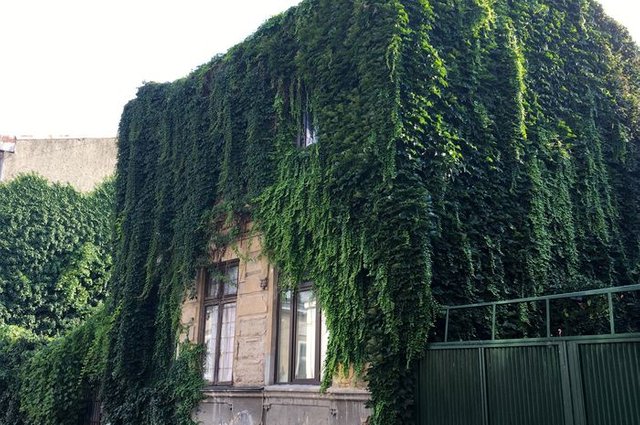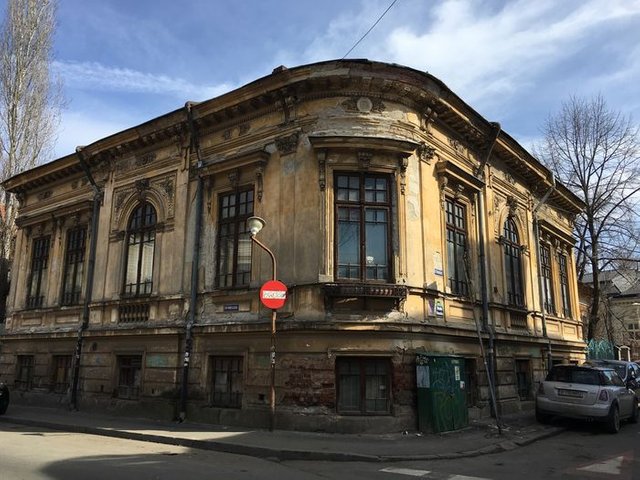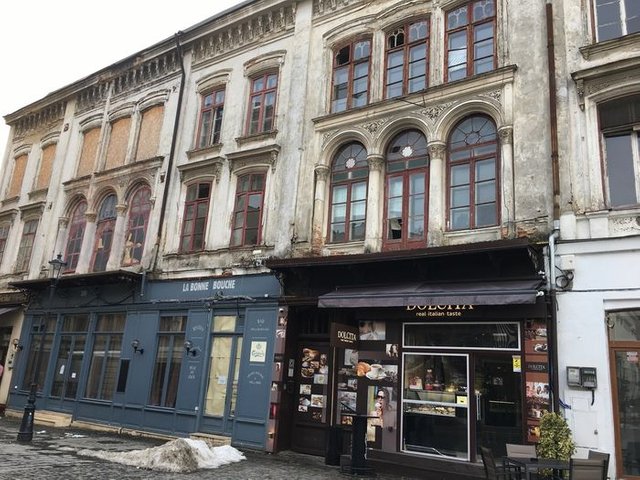
From an empty house on Jalan Praporgescu, Bucharest is often accompanied by the sound of women crying at night. At the end of World War II, two women and one woman killed themselves in this house.
you travel to Romania, thousand old house which is empty and stalled in Bucharest is one of the sights that you will encounter.
Adrenaline-loving tourists and scary stories can enjoy it, especially because some of them are said to be haunted.
Though Bucharest, the capital of Romania, has large streets "grand avenue" and parks, with good urban planning.
All of that is the result of current development Romania came under royal authority until the Communist reign.
Many new buildings were also erected with a touch of beautiful traditional architecture, following the beauty of the old row of empty buildings.
The building is several stories high and built on a large scale that looks like flats.
The surrounding community calls it building blocks.
Empty buildings with traditional aristocratic and bourgeois architecture were apparently also built around the 1840s, during the Romanian period ruled by monarchs or kingdoms.
But in 1940, nearly 8,000 Jewish community homes were seized by the pro-Nazi Ion Antonescu regime.
In addition, in 1945, about 210,000 homes were confiscated when the Communists came to power.
At that time many Romans lost property, both land and buildings.
Today, the conditions of the house and villa are very diverse.
There are still livable with a little improvement, but some are classified as severe because the roof has collapsed.
In it many squatters such as pigeons, owls, rats, cats or dogs.
At a glance, it might not be easy to distinguish between an inhabited house and an empty one.
However, if we examine more carefully, we can see a broken or messy fence or window, and rubbish everywhere.
But at night, the situation is even clearer, that is, the buildings are dark with no light.
This condition makes the buildings look sad or rather scary, especially at night.
This is where the creepy mystery stories were born.

According to local stories, from the house on Jalan Mantuleasa often sounds strange. There were black spots on the front door of the house the next morning. This house has not been inhabited since 1948
The story that is often heard is about the "house of black blood".
The house at the end of Jalan Mantuleasa has not been inhabited since 1948.
It is said that in the past one of its inhabitants was Mircea Eliade, a famous Romanian writer.
Reportedly, from this house, people around often hear strange noises from the entrance of the house at night.
In the morning, sometimes found black spots like blood.
There is also a house called "house of the devil" located on Jalan Praporgescu.
This old house is covered with wild plants that spreads to the roof of the house.
According to the story, during World War II, a man was killed a woman in this house.
Since that is said there are often sightings of a woman in this house.
It's become a restaurantIn the old city of Lipscani, there is also a big wooden window house.
According to local people, this house was once a shelter for children.
But the owner is very cruel, so children are locked up without being given food and drink.
Even though the owner lives in luxury.
For this reason, people often hear the noise of noise at night from the house in the center of this old city.
Among the voices, the voices of children crying and screaming for drinks were heard, "Thirsty ... thirsty ..."
However, at this time, the house has changed into a restaurant.
Explore the old house
Although abandoned, not just anyone can enter the old houses that have not been converted.
These buildings are generally indeed uninhabited.
If anyone occupies, they are not the building owners, but Tsigane people.
Tsigane, a nomadic community in Europe, illegally inhabited it.

Houses filled with trees and wild animals because they are not cared for are a common sight in Romania
Or sometimes there is a permit from the building owner, the limit is until the building collapses on its own.
Many building blocks were built when Romania was under communist rule, ie after 1945 until the fall of communism in 1989.
After that era, buildings were built with modern architecture, while old buildings were being renovated slowly.
Not only houses, during the Communist period, many factories were built in the city.
Many of these factories are either empty or abandoned by their owners.
There are even some buildings that have not been completed, but have been left behind.
Tourists who are interested in exploring these old buildings can actually contact local guides.
But if you want to explore the contents of the building, still be careful.
Even though the foundation looks sturdy from the outside, a fragile edible building can someday collapse to harm visitors.
Although it is prohibited, not a few tourists who still try to visit these old buildings.
Either to just look around or take pictures both photos and videos.
Meanwhile, young people make it a playground with various extreme activities that burn adrenaline.
Loss of residenceAfter the fall of the communist government in 1989, people who lost their property tried to recover their property.
It's just that, the process is not easy.
Because one house can have many owners, tracking down the original owner takes no short time.

From this house on Jalan Strada Francesca, sometimes sounds like the sound of children screaming starving. In the past, this house was a shelter for children, but the cruel owner did not provide enough food. Now renovated into a coffee shop.
These efforts still continue to this day.
The Romanian government is also trying to speed up legal procedures to return the building to its owners who were driven out in the past.
But on the other hand, the poor people who take shelter in the old house must now return to the streets.
Even people who rent from illegal landlords are forced to leave their rented houses, because their leases are obtained from illegal landlords.
Some received a city government allowance to rent a house in another area for six months in Bucharest.
But some of them refused because they suspected that there was a collusion between the government and real estate owners.
On the other hand, the original homeowners began to renovate and rebuild the building.
Factories that were built in the communist era and are no longer functioning, are now also used for offices, birthday parties, and also a place to play laser games .
While the home-old house changed its function to become a clothing boutique, bookstore, and cafe.
Now, Bucharest is gradually less scary and more dynamic.
Development in the city is fast and rapid, especially in terms of trade and business.
New buildings continue to grow, especially in the suburbs.
But now the old housemust occupants decide, move or stay on the road.